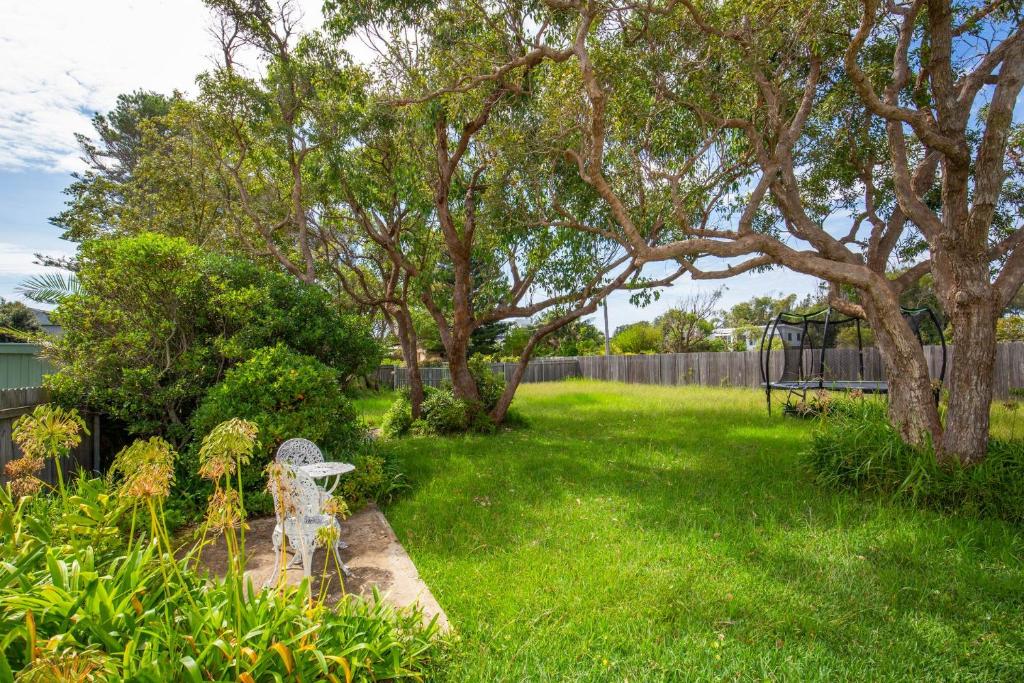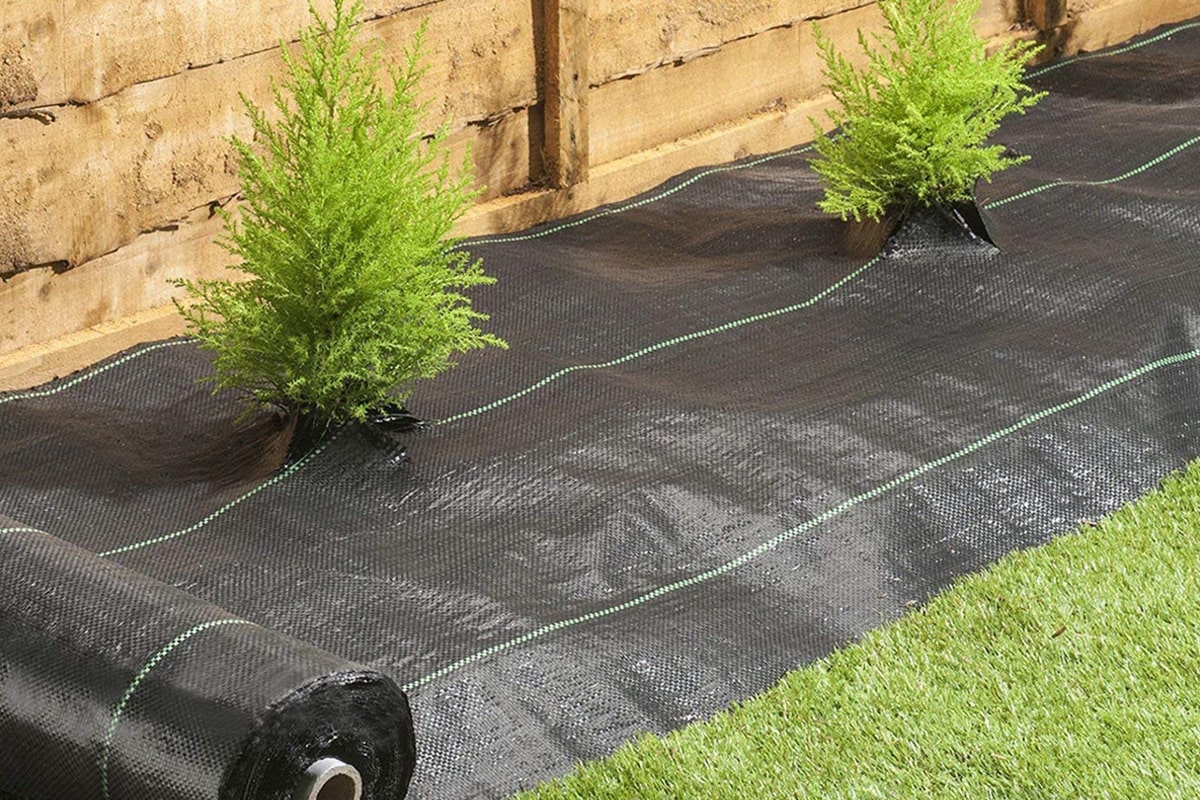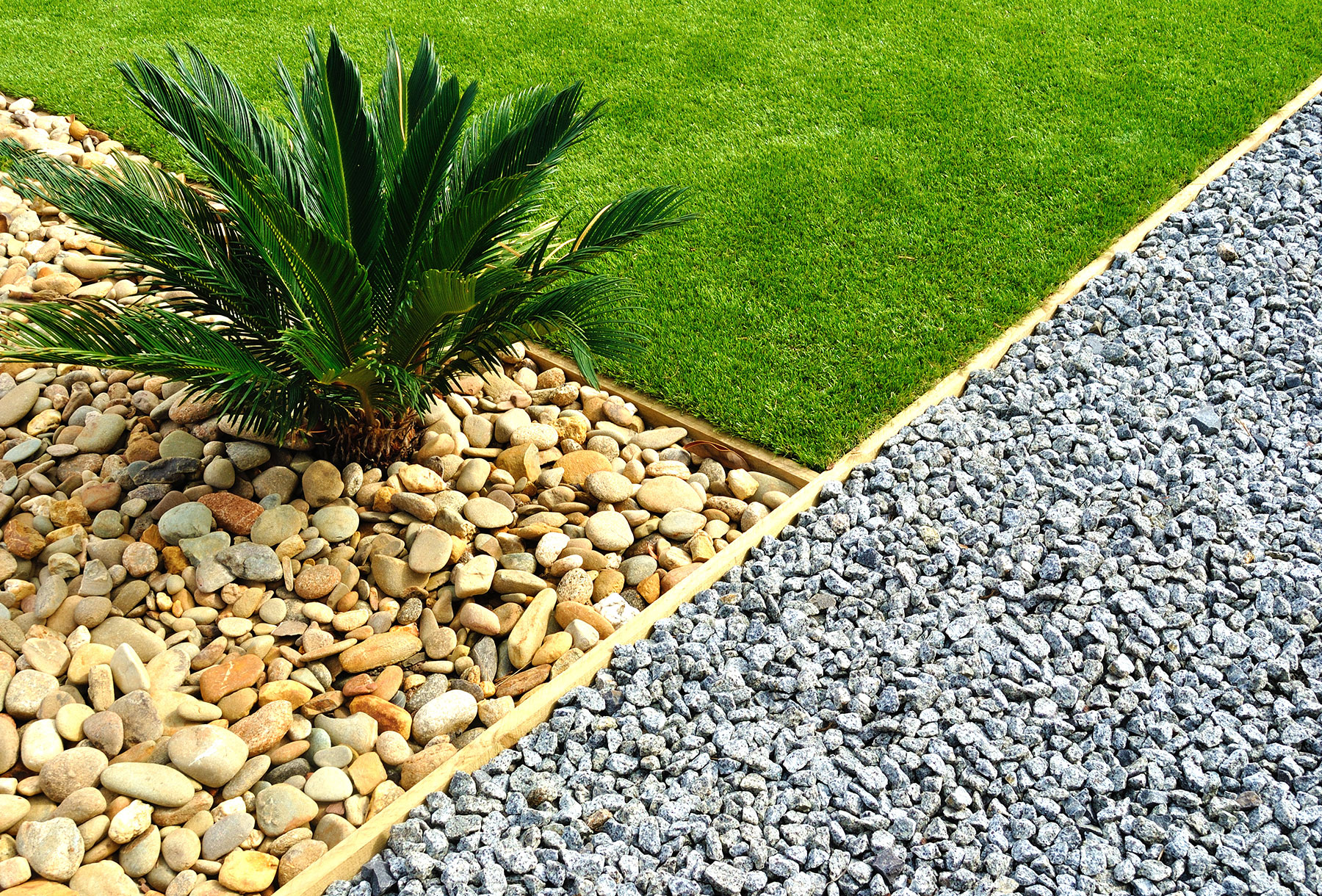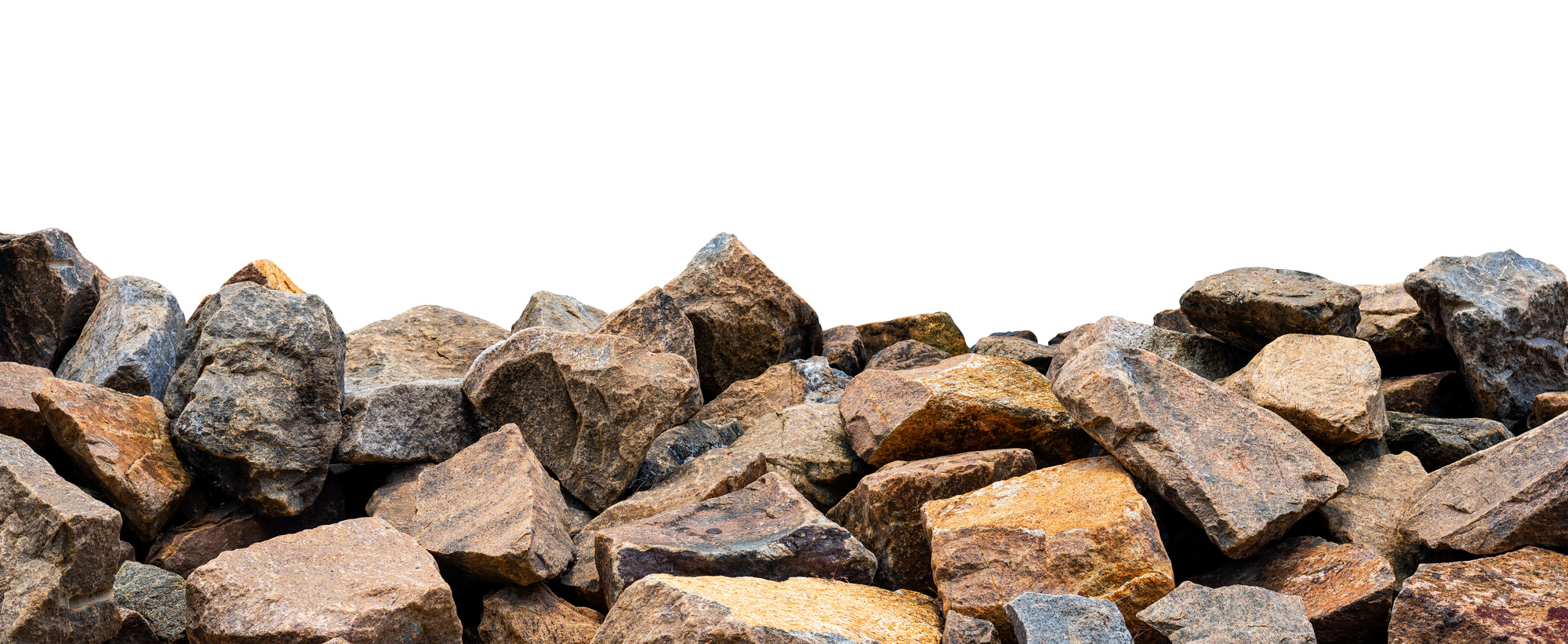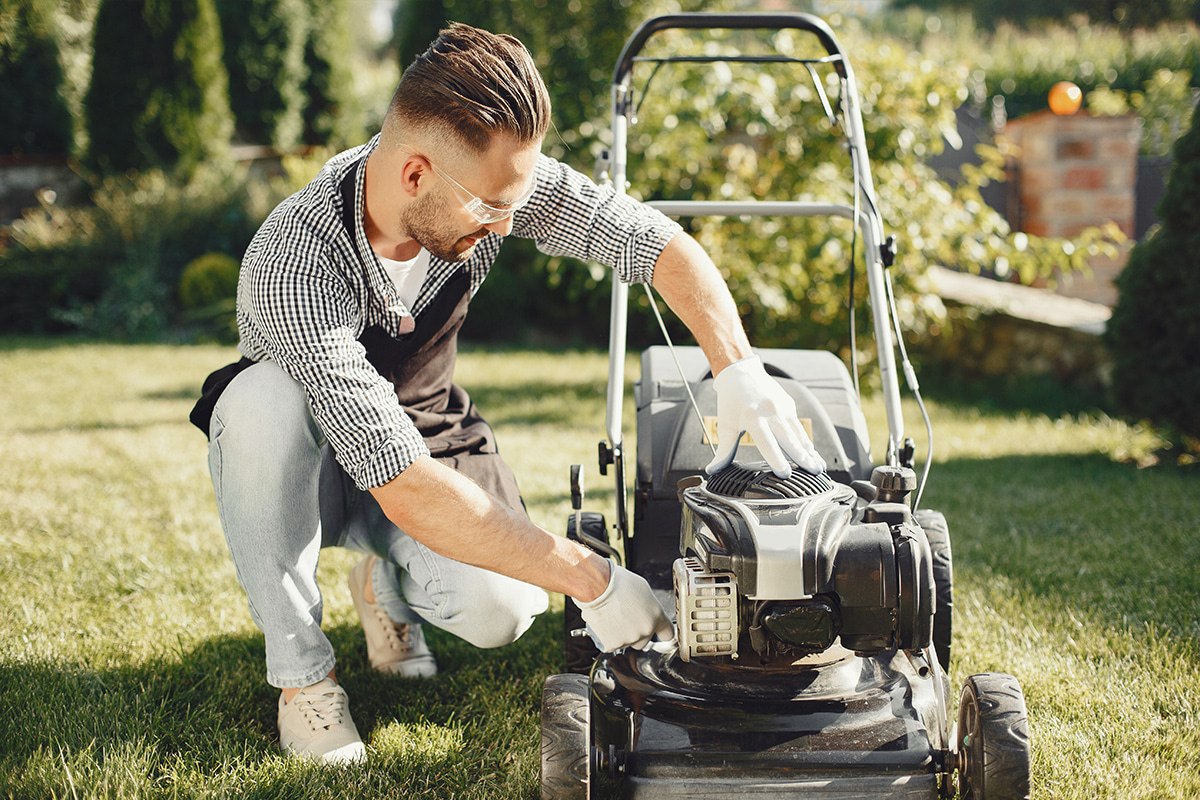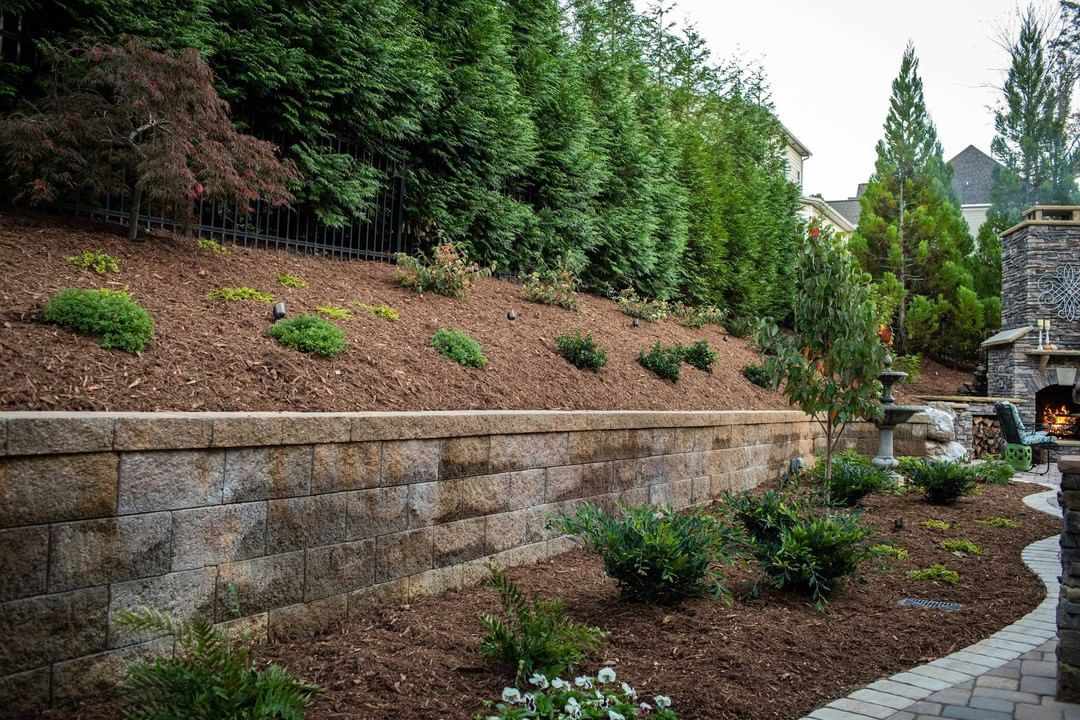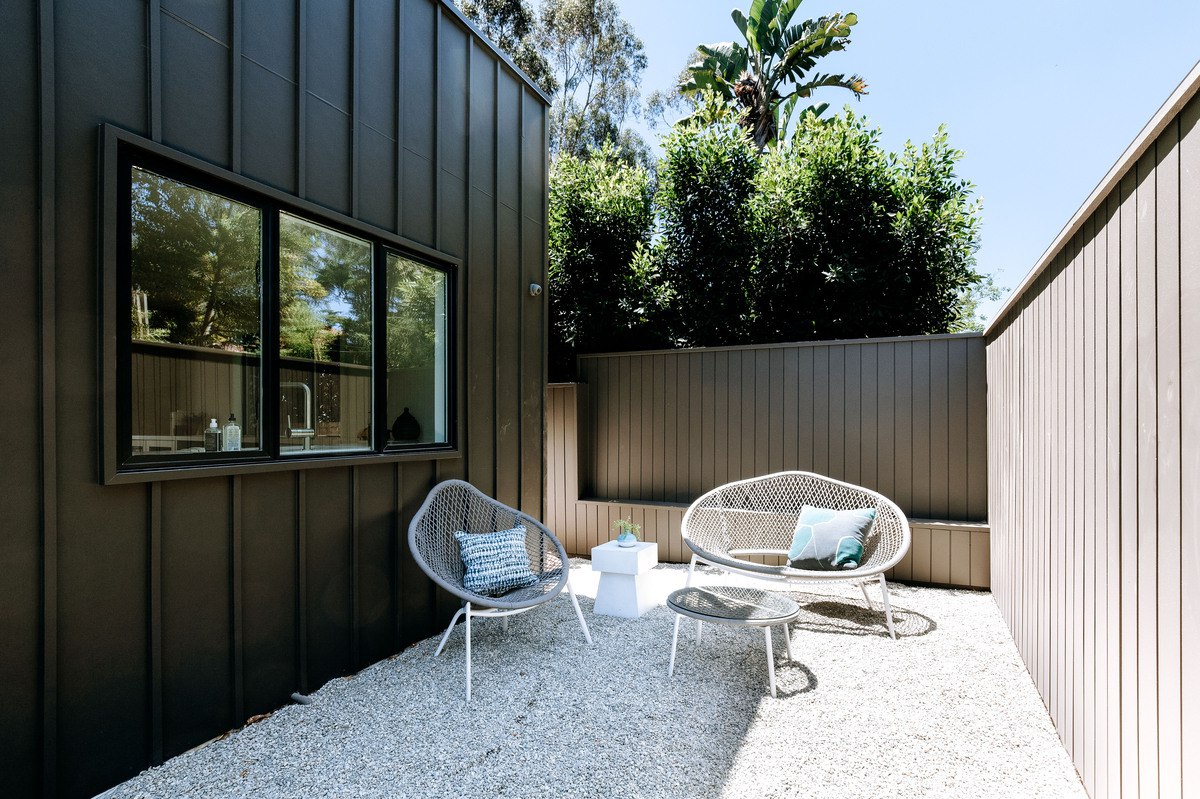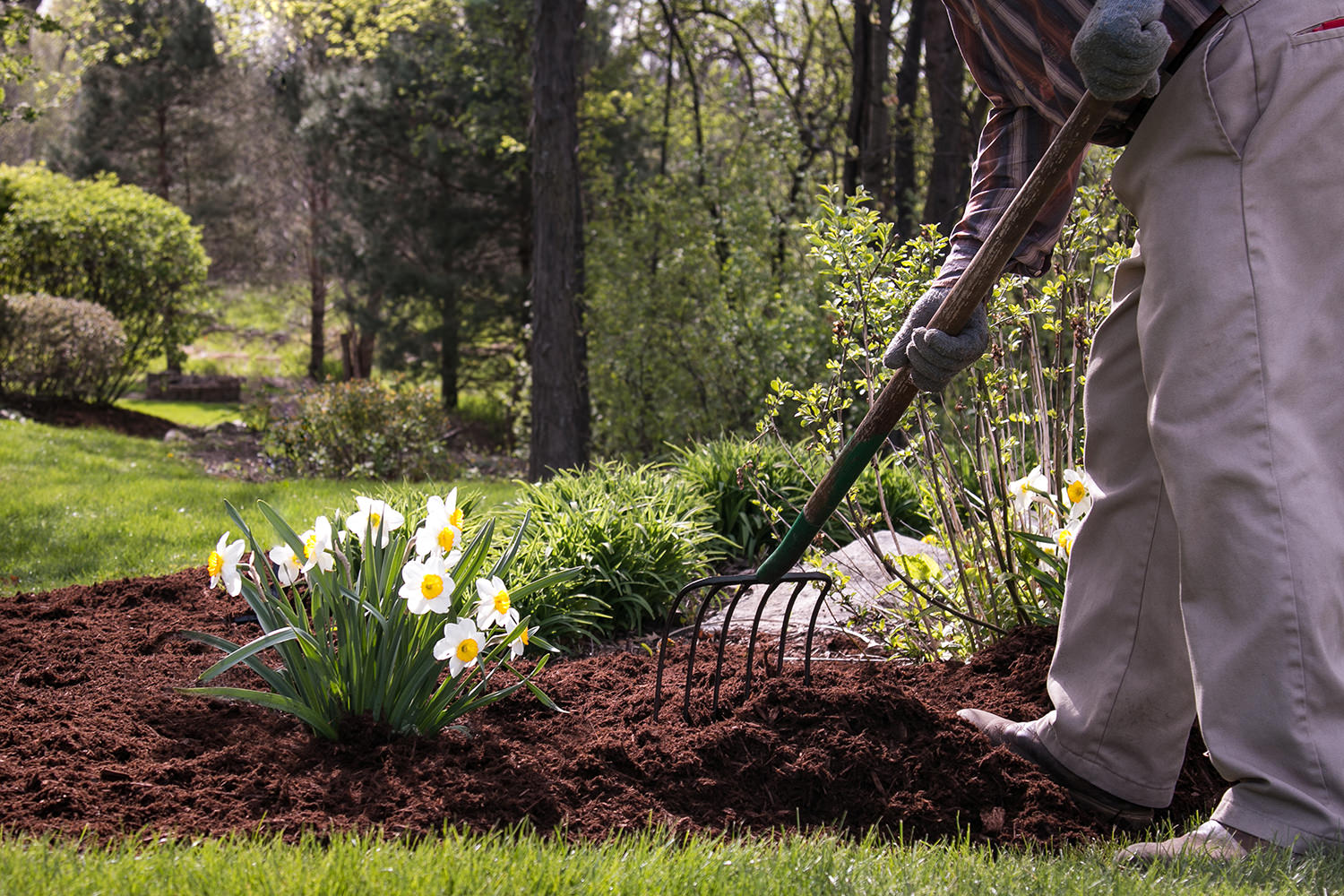Home>Garden Design>Landscape Design>What Are Hardscapes In Landscaping
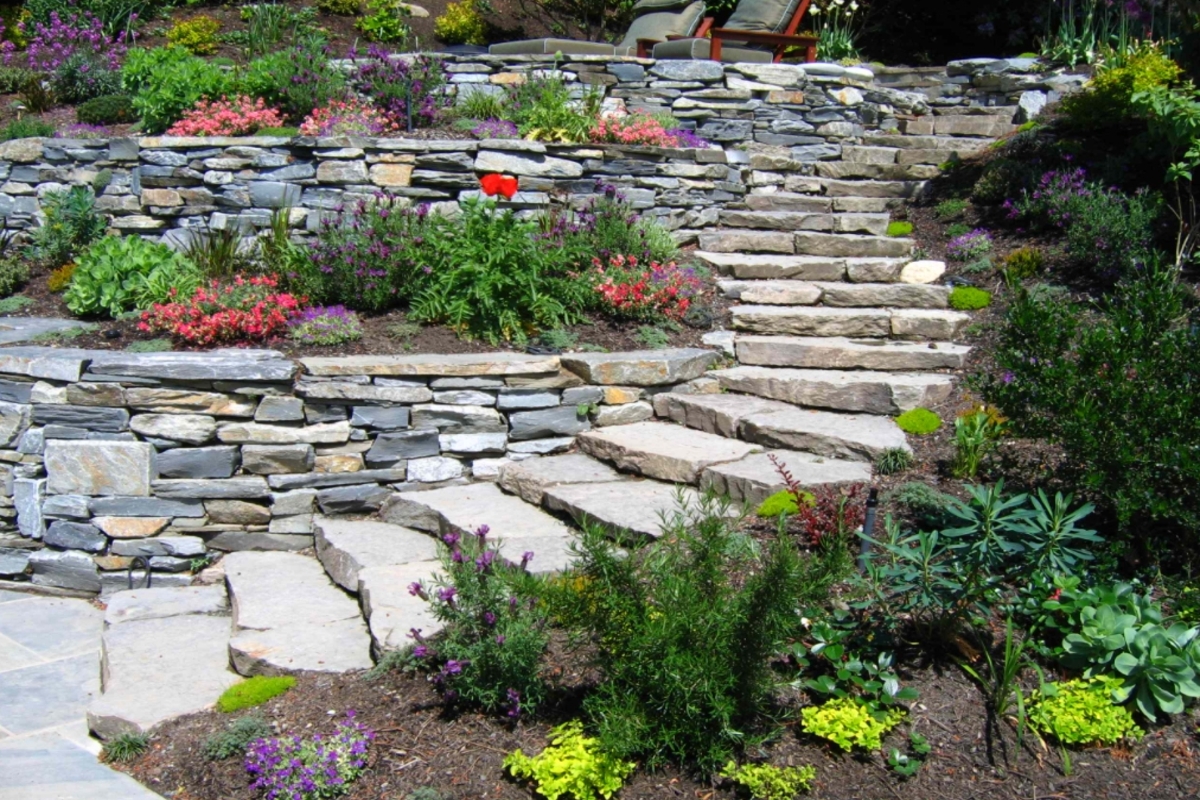

Landscape Design
What Are Hardscapes In Landscaping
Modified: January 22, 2024
Discover the beauty of hardscapes in landscaping with our expert landscape design services. Enhance your outdoor space and create a stunning atmosphere.
(Many of the links in this article redirect to a specific reviewed product. Your purchase of these products through affiliate links helps to generate commission for Chicagolandgardening.com, at no extra cost. Learn more)
Table of Contents
- Introduction
- Definition of Hardscapes in Landscaping
- Elements of Hardscapes
- Benefits of Incorporating Hardscapes in Landscaping
- Common Materials Used in Hardscape Design
- Design Considerations for Hardscapes in Landscaping
- Proper Installation and Maintenance of Hardscapes
- Potential Challenges and Solutions in Hardscape Design
- Examples of Stunning Hardscape Designs
- Conclusion
Introduction
Welcome to the world of landscaping design, where nature blends seamlessly with man-made elements to create stunning outdoor spaces. One of the key aspects of landscaping is hardscaping, which focuses on incorporating “hard” elements such as stone, concrete, and wood into the overall design. Hardscapes not only enhance the functionality and aesthetics of a landscape, but they also add character, structure, and texture to outdoor spaces.
When you think of landscaping, you often visualize lush green lawns, vibrant flowers, and swaying trees. While these natural elements play a vital role in creating a beautiful landscape, the addition of hardscapes takes the design to another level. From patios and pathways to retaining walls and water features, hardscapes offer endless possibilities to transform your outdoor space into a true work of art.
Whether you’re looking to enhance your home’s curb appeal, create a relaxing backyard oasis, or design a functional outdoor entertaining area, incorporating hardscapes into your landscaping can bring your vision to life. With careful planning, creative design, and professional execution, hardscaping can turn an ordinary yard into an extraordinary outdoor living space.
Throughout this article, we will explore the concept of hardscapes in landscaping, the various elements involved, the benefits of incorporating hardscapes, common materials used in hardscape design, design considerations, installation, and maintenance tips, as well as potential challenges and examples of stunning hardscape designs.
Definition of Hardscapes in Landscaping
Before delving into the intricacies of hardscape design, it’s essential to understand the definition of hardscapes in landscaping. Hardscapes refer to the non-living elements incorporated into a landscape design that provide structure, functionality, and aesthetic appeal. These man-made features are designed to complement and coexist harmoniously with the natural elements of the landscape.
While hardscapes are typically made from durable materials such as stone, concrete, wood, and metal, they can also include softer elements like gravel, mulch, and plants arranged in a structured manner. The key distinction between hardscapes and softscapes is that hardscapes are more permanent and require careful planning and construction, whereas softscapes are more fluid and can be easily modified or updated.
The purpose of incorporating hardscapes in landscaping is multifaceted. Firstly, hardscapes serve functional purposes, such as creating pathways, defining borders, providing seating areas, and controlling water drainage. Secondly, they add visual interest and structure to the landscape, creating focal points, breaking up monotonous spaces, and enhancing the overall design. Lastly, hardscapes can significantly increase the property value by creating usable outdoor spaces that extend the living area of a home.
Examples of common hardscape elements include patios, decks, pergolas, gazebos, retaining walls, pathways, driveways, water features, fire pits, outdoor kitchens, and seating areas. These elements can be combined and arranged in various configurations to create a unique and personalized landscape design that reflects the homeowner’s style and preferences.
Understanding the definition of hardscapes in landscaping sets the foundation for exploring the different elements, materials, and design considerations involved in hardscape design. By finding the right balance between hardscapes and softscapes, a well-designed landscape can evoke a sense of harmony and connection with nature while providing functional spaces for relaxation, entertainment, and enjoyment.
Elements of Hardscapes
When it comes to hardscape design, there are several key elements that can be incorporated into a landscape to create a visually appealing and functional outdoor space. These elements work together to define the structure, style, and character of the hardscape design. Let’s explore some of the essential elements of hardscapes:
- Patios and Decks: Patios and decks are versatile hardscape elements that provide a foundation for outdoor living spaces. They serve as areas for relaxation, dining, and entertaining. With various materials available, such as concrete, stone, or wood, patios and decks can be customized to suit different design aesthetics.
- Walkways and Pathways: Walkways and pathways serve both functional and aesthetic purposes. They guide visitors through the landscape while adding visual interest and defining the flow of the outdoor space. Walkways can be made of materials like pavers, flagstone, or gravel, and they can be designed in different patterns and shapes.
- Raised Beds and Retaining Walls: Raised beds and retaining walls add dimension and structure to a landscape. They can be used to create terraces, define garden spaces, or provide support to slopes and uneven areas. Materials like stone, brick, or timber are commonly used to construct these elements.
- Water Features: Water features, such as fountains, ponds, and waterfalls, can create a sense of tranquility and serenity in a landscape. The sound and movement of water add a dynamic element to the design, while also attracting birds and wildlife. Water features can be made from natural or man-made materials, depending on the desired aesthetic.
- Outdoor Structures: Outdoor structures like gazebos, pergolas, and trellises provide shade, shelter, and architectural interest to a hardscape design. These structures can be adorned with climbing plants to create a beautiful fusion of man-made and natural elements.
- Seating Areas: Incorporating seating areas into hardscaping allows for comfortable outdoor living. Whether it’s a simple bench, a cozy built-in seating area, or an outdoor lounge set, providing seating options invites relaxation and socialization in the landscape.
Each of these elements can be tailored to suit the desired style, budget, and functionality of the hardscape design. The careful selection and placement of these elements contribute to the overall aesthetic appeal and functionality of the outdoor space. By integrating these elements thoughtfully, a hardscape design can transform an ordinary landscape into an inviting and captivating oasis for homeowners and their guests to enjoy.
Benefits of Incorporating Hardscapes in Landscaping
Incorporating hardscapes into landscaping offers numerous benefits that go beyond aesthetic appeal. These man-made elements play a crucial role in enhancing the functionality, value, and enjoyment of outdoor spaces. Let’s explore some of the key benefits of incorporating hardscapes:
- Improved Outdoor Living: Hardscapes provide designated areas for outdoor activities, such as dining, entertaining, and relaxation. By creating functional spaces like patios, decks, and seating areas, homeowners can maximize their outdoor living experience and utilize their yard as an extension of their home.
- Increased Property Value: Well-designed hardscapes can significantly increase the value of a property. A thoughtfully planned and expertly executed hardscape design adds curb appeal and creates usable spaces that potential buyers find attractive. This can lead to a higher resale value and a faster sale of the property.
- Low Maintenance: Hardscapes generally require less maintenance compared to softscapes. Unlike lawns and gardens that require regular watering, pruning, and mowing, hardscape elements like stone pathways and decks are low maintenance and can withstand various weather conditions without much upkeep.
- Visual Interest and Design Versatility: Hardscapes introduce visual interest and texture to a landscape by juxtaposing natural elements with man-made structures. The use of different materials, shapes, and patterns allows for endless design possibilities, suitable for various style preferences – from contemporary and minimalist to rustic and traditional.
- Controlled Water Drainage: Hardscapes can help manage water drainage in a landscape by incorporating features like retaining walls, permeable pavers, and French drains. These elements prevent erosion, redirect water flow, and protect the integrity of the landscape during heavy rains.
- Year-Round Enjoyment: Unlike softscapes that are subject to seasonal changes, hardscapes can be enjoyed year-round. With proper outdoor lighting, heating features, and cozy seating areas, hardscapes create inviting spaces for outdoor gatherings and relaxation, no matter the time of year.
By leveraging the benefits of hardscapes, homeowners can optimize their outdoor spaces, create a more functional and visually appealing landscape, and ultimately enhance their overall quality of life. Whether it’s improving outdoor living areas, increasing property value, or reducing maintenance requirements, incorporating hardscapes in landscaping is a wise investment that offers long-lasting benefits.
Common Materials Used in Hardscape Design
When it comes to hardscape design, the choice of materials is crucial in determining the overall look, feel, and durability of the outdoor space. Different materials bring distinct characteristics and aesthetics to the hardscape design. Let’s explore some of the most commonly used materials in hardscape design:
- Stone: Stone is a timeless and versatile material that adds natural beauty and elegance to hardscape designs. Options include flagstone, limestone, granite, and slate, each with its own unique texture, color, and durability. Stone can be used for pathways, patios, retaining walls, and water features, providing a classic and durable choice.
- Concrete: Concrete offers versatility and affordability in hardscape design. It can be poured, molded, or stamped to create various shapes, textures, and patterns. Concrete is commonly used for patios, driveways, walkways, and outdoor seating areas. It can be enhanced with pigments or stains to mimic the appearance of natural stone or brick.
- Wood: Wood brings warmth, character, and a natural aesthetic to hardscape designs. It is often used for decks, pergolas, gazebos, and fences. Different types of wood, such as cedar, redwood, or pressure-treated lumber, offer varying levels of durability and resistance to moisture and insects. Wood elements can be stained or painted to complement the overall design.
- Pavers: Pavers are individual units made from materials like concrete, clay, or natural stone. They are versatile and can be arranged in a variety of patterns, allowing for creative and unique hardscape designs. Pavers are commonly used for pathways, driveways, patios, and pool decks, offering durability and easy maintenance.
- Brick: Brick is a classic and timeless material that adds charm and sophistication to hardscape designs. It is commonly used for pathways, patios, and retaining walls. Bricks come in different colors, sizes, and textures, allowing for design flexibility that matches different architectural styles.
- Gravel: Gravel is a cost-effective and low-maintenance material used for pathways, driveways, and decorative areas. It comes in various sizes and colors, providing both functionality and visual interest. Gravel is permeable, allowing for proper water drainage and reducing the risk of runoff.
Each material offers its own set of advantages and considerations, including aesthetics, durability, maintenance requirements, and cost. The choice of materials should align with the desired style, functionality, and budget of the hardscape design. Consideration should also be given to the climate and specific site conditions to ensure the chosen materials can withstand the elements. Consulting with a professional landscape designer or contractor can help homeowners make informed decisions regarding material selection, ensuring a hardscape design that not only looks aesthetically pleasing but also meets their practical needs and preferences.
Design Considerations for Hardscapes in Landscaping
Designing hardscapes in landscaping involves careful planning and consideration to create a cohesive and functional outdoor space. Several factors should be taken into account to ensure a successful hardscape design. Let’s explore some essential design considerations:
- Overall Landscape Design: The hardscape design should complement and enhance the overall landscape design. Consider the existing elements, such as plants, trees, and architectural features, and find ways to integrate hardscapes seamlessly. The design should create a unified and balanced look throughout the entire outdoor space.
- Functionality: Determine the desired functions and uses of the hardscape elements. Consider how the outdoor space will be utilized, whether it’s for entertaining, dining, relaxation, or gardening. This will guide the selection and arrangement of hardscape elements to ensure they serve their intended purpose effectively.
- Proportions and Scale: Pay attention to the scale and proportions of the hardscape elements in relation to the surrounding landscape and the overall size of the property. Oversized or undersized elements can look out of place and disrupt the visual harmony. Strive for a balanced and appropriate scale that fits well within the space.
- Flow and Circulation: Consider the flow and circulation patterns within the outdoor space. Pathways, walkways, and open spaces should be designed to guide people through the landscape comfortably and intuitively. Connect different areas of the hardscape design to facilitate easy movement and create a harmonious flow between them.
- Lighting: Outdoor lighting is an essential consideration for hardscape design. It enhances both the functionality and ambiance of the space, allowing for extended use during the evening hours. Incorporate a combination of task lighting, accent lighting, and ambient lighting to highlight key features, improve safety, and create a cozy atmosphere.
- Maintenance: Consider the maintenance requirements of the hardscape elements and select materials and features that align with your desired level of maintenance. Some materials, like concrete or pavers, may require occasional cleaning or sealing, while others, like wood, may need more regular upkeep. Choose materials and features that are suitable for your lifestyle and available time for maintenance.
- Budget: Set a realistic budget for your hardscape design and prioritize the elements that are most important to you. Determine where you want to invest your budget and where you can make cost-saving choices without compromising the overall design integrity. A well-planned budget ensures that your hardscape design aligns with your financial capabilities.
By considering these important design factors, you can create a hardscape design that not only enhances the aesthetics of your outdoor space but also meets your functional needs and complements the overall landscape design. Collaborating with a professional landscape designer can be beneficial in navigating these design considerations and ensuring a cohesive and successful hardscape design.
Proper Installation and Maintenance of Hardscapes
Installing hardscape elements requires proper planning, execution, and ongoing maintenance to ensure their longevity and optimal performance. Here are some key considerations for the installation and maintenance of hardscapes:
- Professional Installation: It is advisable to hire a professional landscaper or hardscape contractor for the installation of hardscape elements. They have the expertise, knowledge, and experience to properly prepare the site, ensure proper drainage, and execute precise installation techniques. Professional installation minimizes the risk of errors and ensures a high-quality and durable hardscape design.
- Base Preparation: Proper base preparation is crucial for the stability and longevity of hardscape elements. This involves excavating the area, removing any vegetation or debris, and creating a solid, level base. The base may include layers of compacted aggregate materials, such as crushed stone or gravel, to provide stability and adequate drainage.
- Jointing and Sealing: Depending on the hardscape material, jointing and sealing may be necessary to enhance the durability and appearance of the installed elements. Jointing materials, such as polymeric sand or mortar, can be used to fill the gaps between pavers or stones, preventing weed growth and maintaining stability. Additionally, sealing products can protect materials like concrete or natural stone from staining, water damage, and color fading.
- Regular Cleaning: Regular cleaning is essential to keep hardscape elements looking their best. Sweep or blow away debris and leaves regularly to prevent the buildup of organic matter that can stain or damage surfaces. Use a mild detergent and a soft brush or pressure washer to remove dirt, stains, and moss from surfaces. Avoid using harsh chemicals or abrasive cleaners that can damage the hardscape materials.
- Weed and Vegetation Control: Preventing weed growth in hardscape areas is important to maintain the integrity and appearance of the design. Apply a pre-emergent weed control product before installing hardscape elements to minimize weed growth. Regularly inspect the hardscape surfaces and remove any weeds or unwanted vegetation that may emerge between joints or cracks.
- Winter Protection: In colder climates, proper winter protection is crucial to prevent damage to hardscape elements. Remove any snow and ice promptly to avoid potential damage from freezing and thawing cycles. Avoid using deicing salts or substances that can cause corrosion or discoloration on the hardscape surfaces. Instead, use sand or environmentally friendly ice melting products.
- Regular Inspections and Repairs: Periodically inspect hardscape elements for signs of wear, damage, or shifting. Address any issues promptly to prevent further damage and maintain the integrity of the design. Repair minor cracks, uneven surfaces, or loose joints as soon as they are detected to avoid more extensive and costly repairs in the future.
By following proper installation techniques and implementing regular maintenance practices, you can ensure the longevity and aesthetic appeal of your hardscape elements. Remember to refer to manufacturers’ guidelines and consult with professionals when in doubt to ensure that you are using the appropriate products and techniques for your specific hardscape materials.
Potential Challenges and Solutions in Hardscape Design
Designing and implementing hardscapes in landscaping can present various challenges that need to be addressed to ensure a successful and functional outdoor space. Here are some potential challenges that may arise in hardscape design and possible solutions to overcome them:
- Drainage Issues: Improper drainage can cause water pooling, erosion, or damage to hardscape elements. To resolve this, evaluate the site’s topography and soil conditions during the planning stage. Incorporate proper slope and grading to direct water away from hardscapes. Additionally, consider installing drainage systems, such as French drains or gravel-filled trenches, to channel excess water away from the hardscape areas.
- Settling and Shifting: Hardscapes may settle or shift over time due to soil movement or inadequate installation techniques. Ensure proper base preparation and compaction during installation to minimize settling. Use appropriate materials, such as geotextiles or compacted aggregate, to reinforce the base and provide stability. In case of settling or shifting, consider leveling and compacting the affected areas or consult a professional to address the issue.
- Weed Growth: Weeds can penetrate through gaps in hardscape elements, compromising their appearance and stability. To prevent weed growth, use landscaping fabric or a weed barrier beneath hardscapes during installation. Additionally, regularly inspect the hardscape surfaces and remove any weeds or vegetation that may emerge. Applying a pre-emergent weed control product can also help inhibit weed growth.
- Climate Considerations: Different climate conditions can pose challenges for hardscape design. In areas with freeze-thaw cycles, materials like concrete or natural stone may crack or shift. Consider selecting materials that are suitable for the specific climate and ensure proper installation practices, such as adding expansion joints or using flexible adhesives. In regions with high heat, choose heat-resistant materials and incorporate shading or cooling elements into the hardscape design.
- Maintenance Requirements: Hardscapes may require regular maintenance to keep them in optimal condition. This can include cleaning, sealing, replacing jointing materials, or repairing minor damages. Develop a maintenance plan and schedule that aligns with the specific hardscape elements and materials used. Regular inspections and prompt repairs can help prevent issues from escalating and extend the lifespan of the hardscapes.
- Design Integration: Ensuring a seamless integration between hardscapes and the surrounding landscape can be a challenge. To overcome this, consider incorporating softscapes such as plants, shrubs, and groundcovers around hardscape elements to soften their appearance and create a cohesive design. Blend the colors, textures, and shapes of hardscape and softscape elements to create a harmonious and balanced outdoor space.
Every hardscape design comes with its unique set of challenges, but by identifying and addressing these challenges with appropriate solutions, you can create a functional, visually appealing, and durable outdoor space. Consult with professionals, such as landscape designers and contractors, for guidance and expertise in overcoming specific challenges related to your hardscape design.
Examples of Stunning Hardscape Designs
Hardscapes have the power to transform outdoor spaces into breathtaking and functional areas that are both visually appealing and enjoyable. Here are some examples of stunning hardscape designs that showcase the creativity and potential of incorporating hardscapes in landscaping:
- Contemporary Courtyard: A sleek and modern courtyard design can feature clean lines, minimalist materials, and unique architectural elements. Incorporating concrete pavers, a water feature with geometric shapes, and strategically placed lighting can create an inviting and sophisticated outdoor space perfect for relaxation and entertainment.
- Mediterranean Oasis: Drawing inspiration from the laid-back Mediterranean lifestyle, a hardscape design with elements like rustic stone pathways, a decorative fountain, and a pergola covered in climbing vines can create a charming outdoor retreat. Complemented by vibrant flowers, aromatic herbs, and cozy seating areas, this design evokes a sense of tranquility and offers a space for al fresco dining and relaxation.
- Urban Rooftop Garden: Transforming a rooftop into a green oasis is an innovative use of hardscapes. Incorporating wooden decking, raised plant beds, trellises, and comfortable seating areas can create a functional and inviting urban garden. The addition of container plants, vertical gardens, and herbs bring color and life to this unique hardscape design.
- Natural Waterfront Retreat: For properties near bodies of water, a hardscape design that seamlessly blends with the natural landscape can be breathtaking. Incorporating natural stone steps leading to a dock, a fire pit area with Adirondack chairs, and a stone patio surrounded by lush greenery creates a serene setting to enjoy the views and connect with nature.
- Asian Zen Garden: Creating an Asian-inspired Zen garden with hardscapes can evoke a sense of peace and tranquility. Elements such as a bamboo fence, a stepping stone path lined with pebbles, a wooden pergola, and a soothing water feature can provide a space for meditation and relaxation. Incorporating carefully chosen plants like Japanese maples and ornamental grasses further enhances the serene atmosphere.
- Rustic Farmhouse Retreat: A hardscape design that captures the charm of a rustic farmhouse can include elements like a gravel pathway leading to a weathered wooden gate, a pergola with climbing roses, and a stone patio with a farmhouse-style table and chairs. The design can be complemented by raised vegetable beds, a herb garden, and overhead string lights to create a cozy and inviting atmosphere.
These examples highlight the versatility of hardscape design and how it can integrate seamlessly into different architectural styles and settings. Each design illustrates how thoughtful combination of hardscape elements, materials, and surrounding softscapes can create stunning outdoor spaces that reflect the homeowner’s style and offer a place to connect with nature, entertain, and relax.
Conclusion
Hardscapes play a vital role in landscaping, bringing structure, functionality, and aesthetic appeal to outdoor spaces. By incorporating elements like patios, decks, walkways, water features, and seating areas, hardscapes create opportunities for relaxation, entertainment, and connection with nature. Additionally, they increase property value, provide low-maintenance options, and offer year-round enjoyment.
When designing hardscapes, it’s crucial to consider various factors such as the overall landscape design, functionality, proportions, flow, lighting, maintenance, and budget. Professional installation ensures proper base preparation, jointing, and sealing techniques, while regular maintenance, including cleaning, weed control, and repairs, keeps hardscape elements in optimal condition.
While hardscape design poses challenges such as drainage issues, settling, weed growth, climate considerations, and design integration, these can be successfully addressed by following proper techniques, seeking professional guidance, and implementing appropriate solutions.
Finally, stunning hardscape designs showcase the endless possibilities that can be achieved, from contemporary courtyards and Mediterranean retreats to urban rooftop gardens and Asian-inspired Zen gardens. Each design exemplifies the creative use of materials, elements, and landscaping features to transform outdoor spaces into inviting and visually stunning areas that reflect the homeowner’s style and enhance their quality of life.
Incorporating hardscapes into landscaping opens up a world of possibilities to create unique and functional outdoor living spaces. With careful planning, skilled implementation, and regular maintenance, hardscapes can transform any yard into a beautiful oasis that blends nature and man-made elements seamlessly.
